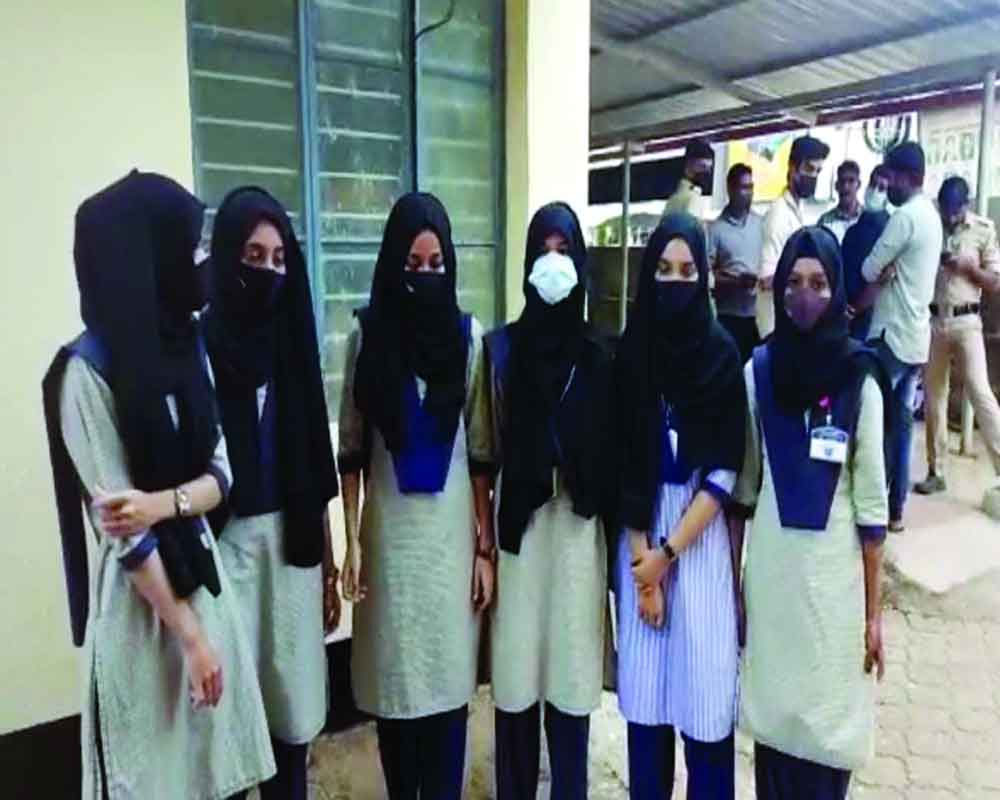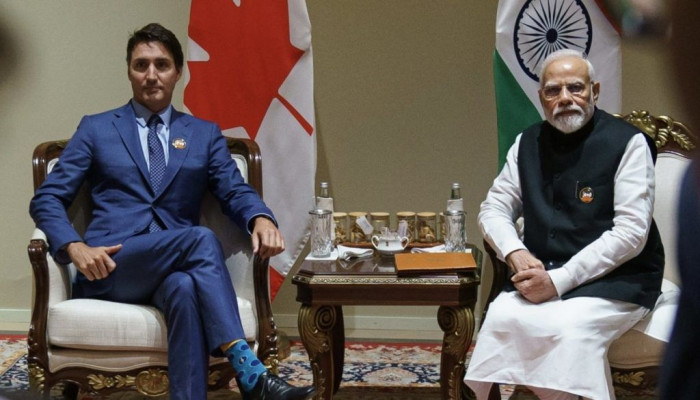A few Karnataka colleges are debating whether girl students should be allowed to wear hijab
The New Year is all about hijabs and saffron scarves in some parts of Karnataka. On January 1, a pre-university college in Udipi barred a few girls from attending classes for wearing the hijab in contravention to college rules. The management says the girls can wear the hijab on campus but not in class. The reasoning is the teacher should have an unobstructed view of the students’ faces while teaching. The girls, unconvinced, raised a protest. They say that they need to wear the hijab to cover their hair in front of men. One argument is why object to the hijab if it only covers the hair, like a scarf. If so, why fasten it with a pin to cover the face as well, runs the other argument. Things turned political when Campus Front of India (CFI), the student wing of the radical Islamic group, Popular Front of India, intervened, claiming religious freedom was being interfered with. The situation is unresolved. In another Karnataka village, Balagadi in Koppa district, some college students wore saffron scarves to protest the management allowing Muslim girls to wear the hijab in the classroom. In the third incident in Kolar district, a Hindu group staged a protest at a Government school, claiming the principal had permitted Muslim students to offer prayers in the classroom on Fridays. The district collector is probing the matter. Slowly but surely, these incidents are not just becoming controversial but triggering a debate on whether a hijab is part of the uniform.
In India, where public display of religion is quite common, these incidents should not have received publicity at all. But what’s worrisome is that such sentiments are flaring up when Karnataka is readying for two major rounds of election. Elections to the Bruhat Bengaluru Mahanagara Palike may be held along with or close to the Zilla Panchayat and Taluk Panchayat polls. That will involve a joint electorate of nearly four crore voters. And the State Assembly elections are slated for early next year. These issues are fodder for religious groups to vitiate the secular atmosphere already burdened by the politics of polarisation. The higher judiciary has to step in to settle the issue once and for all. India is not France, where the display of religious symbols in public is disallowed. In India, everybody wears religion on one’s sleeve, whether the bindi and bangles or the hijab, the holy cross or the Sikh patka. The question of discrimination should not arise at all. The Constitution allows the freedom to practice religion, but the law limits the protection to practices found essential and integral to religion. In a 2016 judgment, the Kerala High Court said that a hijab and a long-sleeved dress are an “essential part of the Islamic religion”. Then the only question the judiciary should sort out is whether the “essential practice” of wearing hijab offends the social order in a classroom and hampers the teacher’s duties.
Courtesy: Pioneer








 OpinionExpress.In
OpinionExpress.In















Comments (0)